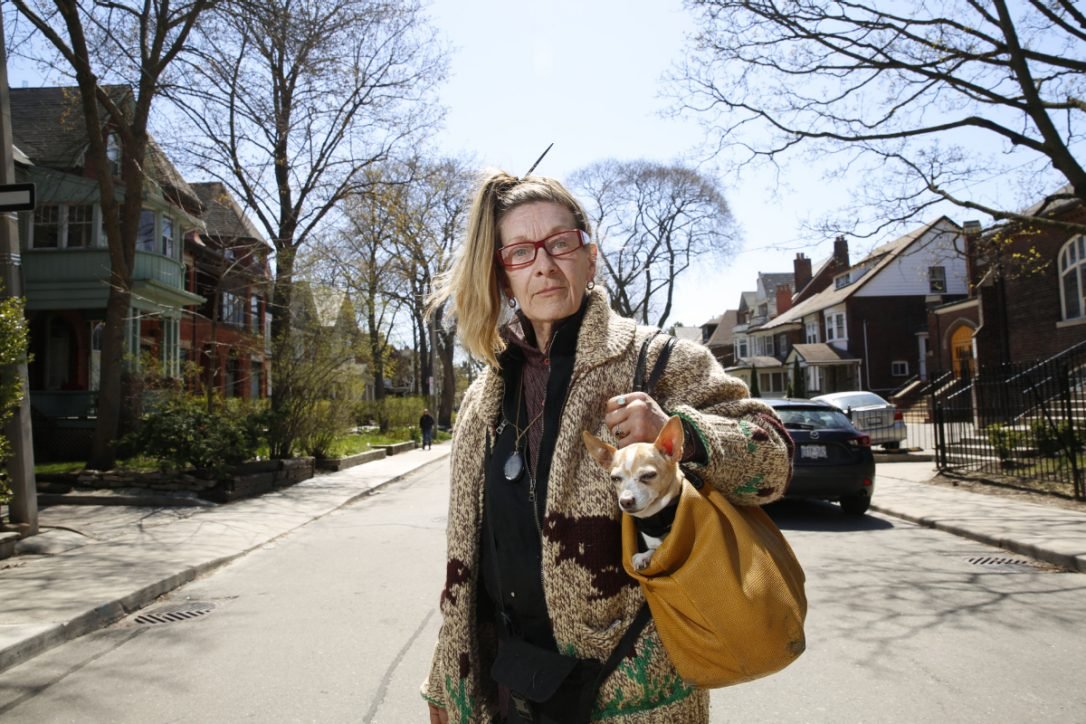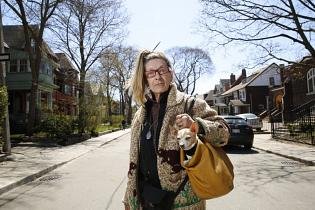Real Estate Boom Threatens Parkdale Rooming Houses
Paul Snider has everything he needs in Parkdale, except for housing security.
“We are hanging on by a thread,†said Snider, 42, who lives in a rooming house in the rapidly gentrifying neighbourhood. “I have this feeling that in 10 years Parkdale is going to be unrecognizable and I won’t be here and I want to be here.â€
Snider moved to Parkdale three years ago and has “fallen in love†with a community where he has access to the programs and services he needs to remain fed, feel well and still have enough money to keep a roof over his head.
“I can survive in a way that is not completely degrading,†said Snider who relies on Ontario Disability Support Payments, in part, he explains candidly, because of mental health issues.
Snider’s housing and the homes of more than 800 people in similar properties are under immediate threat, according to a new study by the Parkdale Neighbourhood Land Trust.
The report, entitled “No Room for Unkept Promises, Parkdale Rooming House Study†reviews the impact real estate speculation, upscaling and conversion is having on rooming houses and similar properties.

Snider was part of a community-based research team, hired by the trust, who surveyed Parkdale, knocking on doors and speaking with owners and tenants to identify and count buildings and occupants. The entire research team also scoured city records and spoke to landowners, city officials and area support workers to determine how buildings were being used.
The results show that in Parkdale alone there are 198 “rooming houses, bachelorette buildings, community non-profit buildings and possible rooming houses,†that fit that criteria and are capable of holding as many 2,715 people. Bachelorettes are what are sometimes called micro-apartments.
Almost 60 of those properties were at risk of being sold or converted into higher cost housing, or repurposed, meaning up to 818 people could lose their homes, over the next few years.
To preserve the units, the land trust is proposing a 10-year plan with tougher tools to slow or stop evictions, the acquisition of properties by non-profit groups and partners who would run the buildings, including the city, developing more affordable housing and policies and planning tools that support development, but not at the risk of pushing out marginalized people. They also want strict safety and cleanliness standards and more oversight, or better tracking, by the city.
“We are concerned, in private hands, that the stock is not secure, so we think there is a unique opportunity as the sector transitions to bring at-risk, private rooming houses into non-profit ownership so we can stabilize sites, improve and restore the housing, and assure that this affordable housing will be available in perpetuity,†said Joshua Barndt, development co-ordinator with the land trust.
Barndt explained that bachelorette apartments, which are particularly at risk, came to be because city council recognized landlords were already renting out the tiny spaces and rezoning would offer tenants more protection, both in terms of oversight and through the preservation of low-cost housing.
“What the city did not anticipate is that in 2017 the real estate market would be so hot that these bachelorette units would be attractive to middle and higher income renters,†he said.
Barndt said since September, 15 properties that served as rooming houses have gone up for sale. Over the past 10 years, he said, 31 have been vacated, sold, shut down, or repurposed.

The proposal will be presented at City Hall next Friday, to staff from multiple divisions, including shelter, support and housing administration, the affordable housing office and city planning.
Councillor Gord Perks, who reviewed the findings on Wednesday, said any proposals on how to preserve low-cost housing in Parkdale are welcome.
“What we know for sure is the private real estate market is not only failing to provide new deeply affordable housing it is also gobbling up deeply affordable housing,†said Perks.
“We are going to need some blend of public and social housing providers if we are going to keep Toronto available to people in all income groups.â€
As part of a pilot project, the land trust is exploring the potential purchase of a 17-unit building, in collaboration with the Parkdale Activity-Recreation Centre (PARC).
One possible scenario, if the project goes through, could be PARC leasing the building and overseeing operations and the land trust buying and preserving the property.
Executive director Victor Willis said the “last thing†Toronto needs is to lose affordable housing and the 2,700 units must be protected.
“It is enormous for Parkdale but it is enormous for the city because there is nowhere for these people to go,†said Willis. “But they will be leaving and that is a problem, unless there is a strategy.â€
The properties already are a public investment, Barndt points out.
Tenants on Ontario Disability Support Payments received a maximum of $479 to use towards rent and people on Ontario Works received up to $374, in 2016, according to the report.
If three out of four tenants in the properties surveyed paid that in rent it would add up to more than $650,000 per month, or $7.8 million each year. A better estimate, based on rental rates, is about $500 to $800 per month, or about $9.5 million, the report states.
“It seems fiscally responsible that public investments in affordable housing generate long-term impact and be recycled,†said Barndt.
It is also far less expensive to keep people off the street. In Toronto, it costs $75 per night to provide a shelter bed, or $2,250 per month, according to information provided by the city to the land trust and included in the report.
Lynne Sky, 67, lives in the same property as Snider and is on the community-based research team.
“There has to be some kind of place for us in the middle, for all of us to come together because you cannot push the most marginalized any further than they are already stretched,†said Sky.
Even if the city committed tomorrow to building enough housing to replace what could be lost it would be years before it was habitable, said Sky.
“I can’t imagine how many people are going to die between now and then. The fastest, most cohesive way to house the most people and get services to them is the very form that the land trust is suggesting.â€

Working with Snider and Sky was Trevor Hardy, 48, who lives in a one-bedroom apartment he was connected to through the city’s Streets to Homes program.
Hardy has lived in rooming houses and said safe, clean and stable housing has allowed him to become self-sufficient, volunteer and plan for his future, possibly helping people obtain housing.
“I see a lot of homeless people out there, members of the community, who are not so fortunate and their health is really deteriorating from being out in the elements.â€
He wants security for everybody in Parkdale, a community he describes as vital as an artery.
Comments
There are 0 comments on this post





